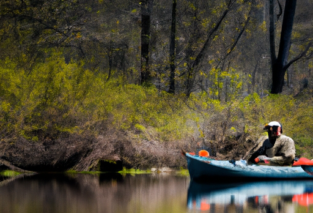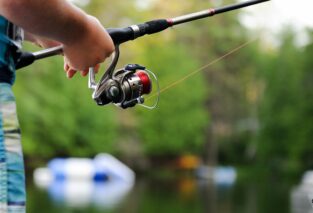If you’re a new angler eager to cast your line into the world of fishing, understanding the relationship between tides and fishing is key to improving your chances of success. As any experienced fisherman will tell you, the ebb and flow of the ocean’s tides have a significant impact on the behavior and movement of fish. In this article, we’ll explore the fascinating connection between tides and fishing and provide you with valuable insights to maximize your fishing adventures. So, grab your gear, and let’s embark on a tidal journey to help you become a skilled angler in no time!
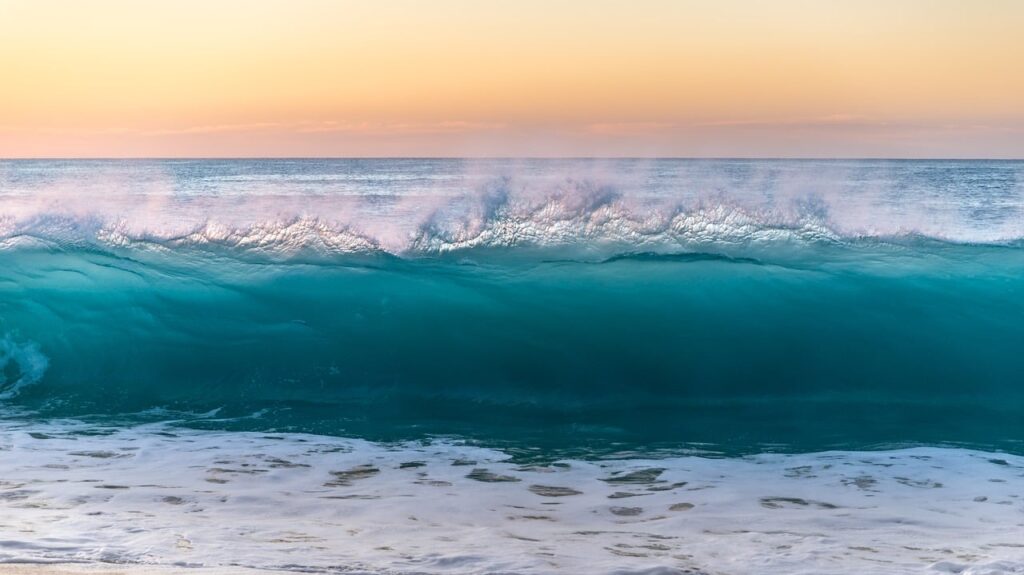
Factors Influencing Fishing Success
Fishing success is influenced by various factors, and one of the most significant is the tidal effect. Understanding the relationship between tides and fishing can greatly improve your chances of a successful fishing trip. In this article, we will explore the impact of tides on fishing, the best times to fish based on tides, the effect of tides on fish behavior, and various local factors that can influence tidal effects. We will also discuss how to utilize tide charts and apps, different fishing techniques for different tide conditions, safety precautions while fishing, and tips for first-time anglers. By the end of this article, you will have a comprehensive understanding of the relationship between tides and fishing, empowering you to make the most of your angling adventures.
Tidal Effects on Fishing
Tides play a significant role in fishing as they affect various aspects of the aquatic environment that fish inhabit. These effects include changes in water depth, current strength and direction, water temperature, and oxygen levels. All of these factors ultimately influence fish behavior and their likelihood of biting. Therefore, understanding tides is crucial for maximizing your fishing success.
Understanding Tides
Before diving into the specifics, it’s important to have a basic understanding of what tides are. Tides are the rise and fall of the ocean’s water levels caused by the gravitational pull of the moon and the sun. The moon, being closer to the Earth, has a greater influence on tides compared to the sun. As the moon orbits around the Earth, its gravitational force pulls the water towards it, causing a bulge or high tide. On the opposite side of the Earth, there is another high tide due to the centrifugal force created by the Earth and moon revolving around a common center of mass.
Types of Tides
There are four main types of tides: semidiurnal, diurnal, mixed, and spring/neap tides. Semidiurnal tides occur twice a day, with two highs and two lows of nearly equal heights. Diurnal tides happen once a day, with one high tide and one low tide. Mixed tides are a combination of semidiurnal and diurnal tides, where the high and low tides are not of equal heights. Lastly, spring/neap tides occur when the gravitational forces of the moon and the sun either reinforce each other or counteract each other, resulting in higher high tides and lower low tides during spring tides, and smaller tidal ranges during neap tides.

Tidal Range and Fishing
Tidal range refers to the vertical difference between high tide and low tide. The tidal range directly affects fishing because it determines the amount of water movement and the availability of food for fish. A larger tidal range means more water movement, which can stimulate fish to feed and search for prey. On the other hand, a smaller tidal range can lead to less water movement and potentially make fishing more challenging. It’s important to consider the tidal range when planning your fishing trip and adjust your fishing techniques accordingly.
Tidal Currents and Fishing
Tidal currents are the horizontal flow of water caused by the rising and falling tides. These currents can be significant, especially in narrow channels or areas with complex topography. Tidal currents affect fishing by transporting nutrients and food sources to different areas, which in turn attracts fish. Additionally, tidal currents can create areas of high turbulence, creating ideal feeding conditions for fish. Understanding tidal currents and their patterns can help you pinpoint fishing hotspots and increase your chances of success.

Best Times to Fish Based on Tides
Now that we have a basic understanding of tides and their effects on fishing, let’s discuss the best times to fish based on different tidal phases.
Incoming Tides
An incoming tide, also known as a flood tide, occurs when the water is rising towards high tide. This is generally considered a prime time for fishing, as the rising water brings in fresh nutrients and prey for the fish. Fish are typically more active during incoming tides, making it easier to entice them to bite. Fishing during an incoming tide can be particularly fruitful in areas where the tide pushes baitfish into shallower waters, attracting larger predatory fish.
Outgoing Tides
An outgoing tide, or ebb tide, is when the water is receding from its highest point towards low tide. Fishing during an outgoing tide can also be fruitful, especially if you target areas where fish retreat as the water level drops. As the water level decreases, fish may congregate in deeper channels, near structures, or around underwater features. By strategically positioning yourself in these areas during an outgoing tide, you increase your chances of connecting with biting fish.
Slack Tides
Slack tides, also known as the period of slack water, occur during the transition between incoming and outgoing tides. During this time, the water movement is minimal, and the tide is neither rising nor falling. While fishing during slack tides can be challenging due to reduced water movement, it can also present unique opportunities. Some fish species are known to feed actively during slack tides, taking advantage of the calm conditions to target prey. It’s essential to adjust your fishing techniques and focus on presenting your bait or lure effectively during this phase.
High and Low Tides
High tides and low tides are the peak points of the tidal cycle. Fishing during these tidal phases can vary depending on the target species and the specific fishing location. High tides can provide excellent fishing opportunities in areas where fish move into shallow waters to feed or spawn. On the other hand, low tides can reveal new fishing spots and expose structures or underwater features that are typically submerged. By understanding how high and low tides affect the behavior of your target species, you can plan your fishing trips accordingly.
Effect of Tides on Fish Behavior
Tides exert a considerable influence on fish behavior, which is crucial knowledge for any angler. By understanding how tides affect fish, you can adapt your fishing techniques and target specific areas to maximize your chances of success.
Feeding Patterns
Tides play a significant role in fish feeding patterns. Many species of fish actively feed during the incoming and outgoing tides when there is increased water movement. As the tide brings in baitfish and other prey, predatory fish take advantage of the abundance of food. It’s important to focus your fishing efforts during these active feeding periods to increase your chances of attracting fish.
Migration and Spawning
Tides also impact fish migration and spawning patterns. Some fish species migrate in response to tides, moving between different areas to find optimal feeding grounds or breeding sites. For example, certain species may migrate upstream during high tides to spawn in freshwater habitats. Understanding the migration and spawning patterns of your target species can help you identify the best fishing locations and timing.
Seeking Shelter
Tides can influence fish behavior by creating changes in water depth and flow. During high tides, fish may move into shallower areas to seek shelter or find food that becomes more accessible as the water rises. Similarly, during low tides, fish may retreat to deeper waters or seek cover in structures like rocks, submerged vegetation, or underwater ledges. By identifying these preferred shelter spots, you can increase your chances of finding actively feeding fish.
Preferred Fishing Spots
Knowing how tides affect fish behavior can help you identify preferred fishing spots. For example, during incoming tides, fish often move towards structures like jetties, piers, or rocky areas where they can find cover and ambush prey. On the other hand, during outgoing tides, fish may be more concentrated near channels, drop-offs, or structures where they can take advantage of the flowing water to feed. By understanding fish behavior during different tidal phases, you can locate these preferred spots for a successful fishing experience.
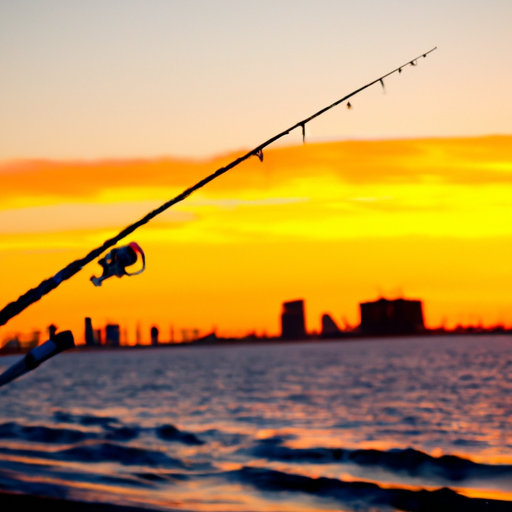
Local Factors Influencing Tidal Effects
While tides have a universal impact on fishing, there are also local factors that affect tidal effects. These factors can vary from one fishing location to another and can significantly influence your fishing success.
Geography and Topography
The geography and topography of the area where you are fishing play a crucial role in tidal effects. Coastal regions with irregular coastlines, shallow bays, or narrow channels can experience stronger tidal currents and more pronounced changes in water levels. These areas often create eddies, points, or other underwater features that attract fish and enhance feeding opportunities. Understanding the geography and topography of your fishing spot can give you valuable insights into where fish are likely to be.
Coastal Structures
Coastal structures such as jetties, piers, breakwaters, or reefs can significantly impact tidal effects and subsequently influence fishing. These structures can alter water flow, create eddies, and provide shelter for fish. During the different tidal phases, fish may congregate around these structures to feed or seek refuge from strong currents. Fishing near coastal structures can be productive, but it’s important to consider the safety aspects and any regulations pertaining to fishing in these areas.
Estuaries and Inlets
Estuaries and inlets are areas where freshwater rivers meet the sea, creating a unique ecosystem that supports a diverse range of fish species. Tides have a profound impact on estuaries and inlets as the rising and falling water levels influence the movement of fish and the availability of food. Many fish species utilize these areas as nurseries or for feeding, as estuaries often provide abundant nutrients and shelter. Understanding the tidal effects in estuaries and inlets can unlock excellent fishing opportunities.
Beach and Shoreline Fishing
Tidal effects are also evident in beach and shoreline fishing. As the tide rises and falls, it can create changes in water depth and expose new fishing spots along the shoreline. During higher tides, fish may move closer to the beach, providing opportunities for surf fishing. Conversely, during lower tides, fish may be found farther from the shoreline, requiring longer casts or different fishing techniques. Considering the tidal effects when fishing from the beach or shoreline can help you determine the best spots and casting distances.
Utilizing Tide Charts and Apps
To make the most of the relationship between tides and fishing, it’s essential to utilize tide charts and apps. These tools provide valuable information about tidal predictions, including high and low tide times, tidal ranges, and more. They allow you to plan your fishing trips in advance and adjust your fishing strategies based on the predicted tidal patterns.
What Are Tide Charts
Tide charts are graphical representations of tidal predictions. They typically display the times and heights of high and low tides for a specific location. By using a tide chart, you can determine the best times to fish and prepare accordingly. Many fishing publications, websites, and local tourism centers provide tide charts for popular fishing areas. Additionally, you can find tide charts specific to your location through online resources or smartphone apps.
Finding Accurate Tide Information
When using tide charts or apps, it’s important to ensure that the information is accurate and reliable. Tidal predictions are based on complex calculations that take various factors into account, including astronomical data, historical observations, and local conditions. To find accurate tide information, consult reputable sources such as government agencies responsible for maritime safety or reputable fishing organizations. It’s also beneficial to cross-reference the information from multiple sources to ensure consistency.
Using Tide Apps and Websites
Tide apps and websites provide a convenient way to access tide information on the go. These resources often offer additional features such as real-time updates, customizable notifications, and user-friendly interfaces. Some popular tide apps and websites include NOAA’s Tides and Currents website, Tides Near Me app, and Fishbrain app. These tools can be invaluable for staying informed about tidal conditions and optimizing your fishing trips.
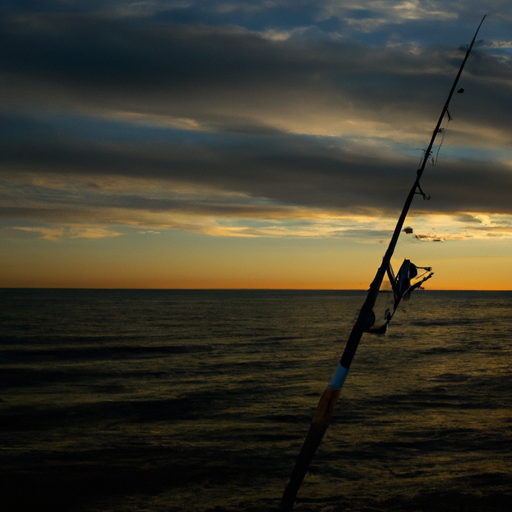
Tidal Fishing Techniques and Tips
Different fishing techniques are more effective during specific tidal conditions. Whether you are surf fishing, inshore fishing, offshore fishing, or even fly fishing, adapting your techniques to the prevailing tidal conditions can significantly improve your success rates.
Surf Fishing
Surf fishing is a popular method of fishing from the shoreline, often targeting species like striped bass, redfish, or snook. When surf fishing, it’s crucial to pay attention to the tides as they dictate the movement of fish and the availability of feeding opportunities. During incoming tides, fish may move closer to the shore to feed in the turbulent water. Casting beyond the breaking waves and retrieving your bait or lure through the strike zone can yield excellent results during this time.
Inshore Fishing
Inshore fishing involves targeting fish species in the shallow waters of bays, lagoons, or estuaries. When fishing inshore, understanding tidal currents and their influence on fish behavior is paramount. During outgoing tides, fish may position themselves near channels or drop-offs to take advantage of the water movement and an abundance of food being carried away. By casting into these areas and working your bait or lure against the current, you can entice fish to strike.
Offshore Fishing
Offshore fishing is typically done in deeper waters, where fish species like tuna, marlin, or mahi-mahi are targeted. While tidal effects may not be as pronounced in offshore fishing, they can still have an impact on fish behavior. Paying attention to tide changes and focusing your fishing efforts during transitional periods, such as the shift from an incoming to an outgoing tide, can increase your chances of locating actively feeding offshore fish.
Fly Fishing and Tides
Fly fishing enthusiasts can also benefit from understanding tides. Tides influence water movement, which affects the behavior of baitfish and prey items that are crucial for successful fly fishing. During incoming tides, baitfish may move closer to the shoreline or shallower waters, attracting predatory fish. This can present an opportunity for fly anglers to imitate these baitfish patterns and target actively feeding fish. Observing these patterns and adjusting your fly selection and presentation can lead to more strikes.
Bait Selection for Tidal Fishing
Tidal conditions can also impact the effectiveness of different bait choices. During incoming tides, fish are often more active and eager to feed, making live bait or fast-moving lures excellent choices. Baitfish imitations, such as soft plastic swimbaits or spoons, can be particularly effective during this time. On the other hand, during slack tides or low activity periods, using natural baits like shrimp, cut bait, or even scent-enhanced lures can entice finicky fish. Experimentation and adjusting your bait selection based on the prevailing tidal conditions can make a significant difference in your fishing success.
Adapting to Changing Tide Conditions
Tidal patterns are constantly changing, and being able to adapt to these changes is crucial for consistent fishing success. By observing and analyzing tide patterns during your fishing trips, you can develop strategies to maximize your catch rates.
Observing and Analyzing Tide Patterns
As you spend more time on the water, observe the tide patterns and how they correlate with fish behavior. Take note of the fishing spots that produce the best results during specific tidal phases. Over time, you will start to identify patterns and develop a deeper understanding of how tidal conditions affect fish in your fishing area. Keeping a fishing journal or log can be immensely helpful in recording your observations and using that knowledge to your advantage in future trips.
Strategies for Different Tide Phases
Having a repertoire of fishing strategies for different tidal phases is key to adapting to changing tide conditions. During incoming tides, focus on areas with active water movement and fish activity. Use techniques that simulate wounded or fleeing prey to trigger aggressive strikes. During outgoing tides, target areas where fish retreat as the water level drops. Slow-moving baits or offering natural presentations can be effective during slack tides or when fish are less active. By adjusting your strategies to match the prevailing tide conditions, you increase your chances of landing more fish.
Modifying Fishing Techniques
Tidal changes can also dictate the behavior and feeding preferences of fish. When the tide is rising or falling aggressively, fish may be more responsive to faster presentations or aggressive retrieves. Conversely, during slack tides, fish may exhibit more selective feeding behavior, requiring a more subtle and finesse approach. Paying attention to these nuances and modifying your fishing techniques accordingly can be the difference between a successful day on the water and a frustrating one.
Safety Precautions While Fishing
While enjoying your fishing adventures, it is essential to prioritize safety, especially when dealing with the power of tides and water currents. Taking necessary precautions can help ensure a safe and enjoyable fishing experience.
Tides and Water Safety
Tides can create strong currents, particularly in areas with narrow passages or complex topography. It’s crucial to be aware of these currents and their potential hazards. Avoid fishing in areas with strong tidal currents unless you have the necessary skills and experience to deal with them. If you do fish in areas with strong currents, always wear a life jacket and stay vigilant. In case you are swept away by a current, it’s important to know proper water safety techniques such as floating or swimming with the current, rather than against it.
The Dangers of Strong Currents
Strong tidal currents pose numerous risks, including the potential for being swept away, pulled under the water, or caught on underwater hazards. It’s important to stay away from areas with dangerous currents and avoid wading in unknown waters. Always be mindful of your surroundings, especially if you are fishing from rocks, jetties, or near steep drop-offs. If you are unsure about the safety of an area, consult local experts or park rangers who are familiar with the fishing and tidal conditions.
Awareness of Rising Tides
When fishing along the shoreline or in areas prone to tidal flooding, it’s crucial to be aware of rising tides. Tides can change quickly, and it’s easy to become stranded on a sandbar or isolated by rising waters. Make sure to plan your fishing activities according to the tide charts and give yourself plenty of time to safely move to higher ground as the tide rises. During high tide, be cautious of rogue waves and never turn your back to the ocean.
Tips for First-Time Anglers
For first-time anglers, understanding the relationship between tides and fishing can be overwhelming. However, with the right approach and a willingness to learn, even beginners can increase their chances of a successful fishing trip.
Learning from Experienced Anglers
One of the best ways to learn about fishing and tides is by seeking advice from experienced anglers. They have likely spent countless hours on the water and have valuable insights to share. Joining a local fishing club or participating in guided fishing trips can provide invaluable opportunities to learn from those who have mastered the art. Don’t be afraid to ask questions and soak up as much knowledge as possible. Experienced anglers can offer tips specific to your fishing location and guide you through the intricacies of fishing during different tidal conditions.
Experimentation and Observation
Every fishing spot is unique, and the only way to truly understand the relationship between tides and fishing in your area is through experimentation and observation. Take the time to explore different fishing locations and fish during various tidal phases. Observe how fish behave, note any feeding patterns, and make adjustments to your fishing techniques accordingly. Experiment with different bait choices, lure presentations, and fishing techniques to find what works best for you. Embrace the journey of learning and be patient with yourself as you develop your angling skills.
Building a Personal Tide Journal
Keeping a personal tide journal can be a game-changer for any angler, especially for beginners. Record details about each fishing trip, including the date, time, tidal phase, weather conditions, bait/lure choices, and the fish caught or missed. Over time, you’ll start to notice patterns and trends, which can help you make more informed decisions during future fishing trips. Your tide journal will become a valuable resource that allows you to reflect on past experiences and build upon your knowledge of fishing and tides.
Conclusion
Understanding the relationship between tides and fishing is essential for any angler looking to improve their success on the water. Tides influence various aspects of the aquatic environment, including water movement, current strength, and fish behavior. By comprehending the effects of tides on fish feeding patterns, migration, and shelter preferences, anglers can strategically plan their fishing trips and adapt their techniques for different tidal conditions. Utilizing tide charts, apps, and observing local factors like geography and topography can further enhance fishing success. Additionally, prioritizing safety, embracing experimentation, and learning from experienced anglers are valuable tips for first-time anglers. By incorporating these insights into your fishing endeavors, you are well on your way to becoming a skilled angler capable of harnessing the power of tides for a rewarding and productive fishing experience. So, grab your rod and reel, consult those tide charts, and get ready to embark on unforgettable angling adventures!




